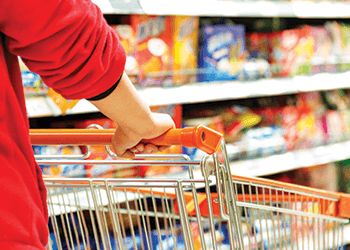 For retailers and restaurants alike providing a positive customer experience is now crucial to success. Because in industries where competition is tough, margins are shrinking and labor costs are rising; each and every repeat customer really does make a difference to the bottom line.
For retailers and restaurants alike providing a positive customer experience is now crucial to success. Because in industries where competition is tough, margins are shrinking and labor costs are rising; each and every repeat customer really does make a difference to the bottom line.
That’s why an increasing number of businesses are now turning their attention to improving customer experience – experimenting with initiatives that provide easier, faster and more enjoyable ways to consume. But these initiatives can be costly. Is there an easier and more cost effective way to improve the customer experience?
The concept of the retail customer experience has become increasingly popular in recent years – and it’s easy to see why.
Consumers now have an abundance of choices when it comes to where they eat or shop; meaning a good customer experience can often mean the difference between a loyal, repeat customer and a passing visit.
In fact, a 2015 study by Forrester into the effect of a good customer experience on revenues, found that “there was a clear correlation between superior customer experience and superior revenue growth”. This suggests that those businesses that offer a better customer experience will be the ones that prosper.
Plus, with the ability for customers to share bad customer service to a global audience (via social media), the effects of a poor customer experience are no longer limited to those who experience it first-hand.
 With smaller margins, lower footfall and tougher competition; retailers are doing more to augment the retail customer experience while simultaneously cutting (labor) costs. Initiatives such as scan-as-you-shop or self-service checkouts aim to provide a more customer-focused shopping experience without increasing the number of employees on the shop floor.
With smaller margins, lower footfall and tougher competition; retailers are doing more to augment the retail customer experience while simultaneously cutting (labor) costs. Initiatives such as scan-as-you-shop or self-service checkouts aim to provide a more customer-focused shopping experience without increasing the number of employees on the shop floor.
For QSR’s business is just as tough. Higher labour costs have hit the industry hard, driving many to introduce cost saving measures in the form of automation. Digital order kiosks are popping up in restaurants up and down the country and apps that allow the customer to order and even pay for their meals are increasingly popular.
But, is all this automation really driving a better customer experience? Many argue that initiatives such as self-service checkouts simply place more of a burden on the customer. A 2013 study showed that as many as one in three shoppers abandoned a purchase at the register due to a bad experience with the self-service checkout.
Plus, frequent breakdowns and lack of support from instore staff also cause frustration and longer wait times – damaging the customer experience.
So how can businesses improve the retail or restaurant customer experience, and offset higher labor costs without removing that oh-so-important level of human interaction?
One of the most obvious solutions is to automate back-office tasks – those jobs that take employees off the shop floor and away from customers. For cash heavy industries such as retail and QSR, often a large portion of this back-office, administrative work includes cash management tasks.
By streamlining your cash management and automating time-consuming manual processes, your employees can spend less time in the back office managing your cash and more time with your customers. This means shorter wait times for your customers and an improved customer experience
From Cash Counters to Intelligent Cash Drawers, there are a number of ways that your business can automate time-consuming manual cash management tasks. Not only will this technology reduce the time spent on back-office tasks, but they can also accelerate shift changeovers allowing lanes to stay open for longer, and allowing employees to remain on the shop floor. Plus, with Smart Cash Drawers able to identify when a customer has been shortchanged (in real-time) negative experiences can be prevented.
All this means an improved customer experience instore (or restaurant) and an increased level of interaction between your customers and your employees and – without increasing labor costs. What’s to lose?